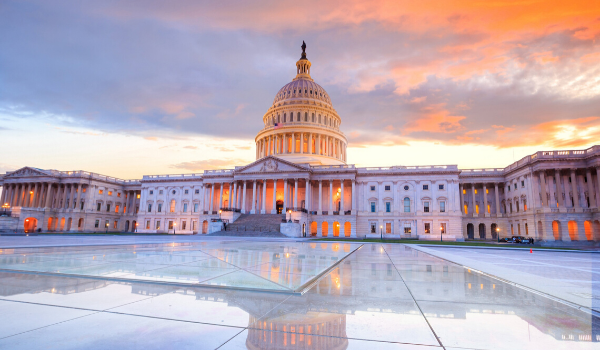On March 18, 2020, President Trump signed into law the Family First Coronavirus Response Act (the “Act”). The Act contains a number of provisions to provide relief during the Covid-19 crisis.
Here are some of the important features:
1. Emergency Paid Sick Leave Act
The Act provides up to two weeks of paid sick leave to all employees of employers with fewer than 500 employees. The Act covers both full-time and part-time employees, although part-time employees may not be entitled to a full two weeks of paid leave. Part-time employees are entitled to paid leave equal to the number of hours they work on average over a two-week period.
Paid leave under the Act is triggered by one of the following reasons:
- An employee is subject to a federal, state or local quarantine order related to Covid-19.
- An employee has been advised by a healthcare provider to self-quarantine as a result of exposure to Covid-19.
- An employee is experiencing symptoms of Covid-19 and is seeking a medical diagnosis.
- An employee is caring for an individual who is subject to a self-quarantine or isolation order or has been advised by a healthcare provider to self-quarantine.
- An employee is caring for a child whose school has been closed.
- An employee has any other qualifying condition under rules to be set forth by the Secretary of the Treasury or the Secretary of Labor.
The Act requires the Secretary of Labor to issue regulations to help employers calculate paid sick leave no later than April 2, 2020. In addition, the amount of paid sick leave is capped.
2. Emergency Family and Medical Leave Expansion Act
The Act provides up to 12 weeks of Family and Medical Leave if an employee is unable to work because the school or day care facility for a child under the age of 18 has been closed or the child’s babysitter or nanny is unable to work as a result of a Covid-19 emergency declared by the federal, state or local government. In order to be eligible, an employee must have worked for at least 30 days for the employer. In addition, the first 10 days of leave may be unpaid. The Act simply adds another reason an employee may take Family and Medical Leave. It does not increase the amount of leave available to an employee beyond what is already available under current law.
3. Testing for the Coronavirus
The Act requires that health plans, whether group or individual, and whether fully-insured or self-insured, cover the entire cost of testing for Covid-19 at no cost to the employee. This means that an employee may not be charged co-pays, deductibles or any other type of cost-sharing. The testing may occur at a healthcare provider’s office, an urgent care center or an emergency room. In addition, the Act covers telemedicine visits. The employee need not obtain preauthorization. The only requirement is that the testing be for Covid-19.
The Act only covers testing for Covid-19. It does not include treatment for Covid-19. However, there is nothing in the Act to prevent an employer or a health plan from covering the costs for treatment as well.
4. Tax Credits
The Act also includes tax credits to help an employer pay for the cost of paid sick leave and the expansion of Family and Medical Leave.
This legislation may just be the beginning. As the crisis develops, Congress may enact other legislation to help Americans deal with the crisis.
![Family First Coronavirus Response Act [Technical Memorandum]](https://rmcgp.com/hubfs/Imported_Blog_Media/business-table-scaled.jpg)

![Coronavirus Aid, Relief and Economic Security Act [Technical Memorandum]](https://rmcgp.com/hubfs/Imported_Blog_Media/CARES-Act.png)
